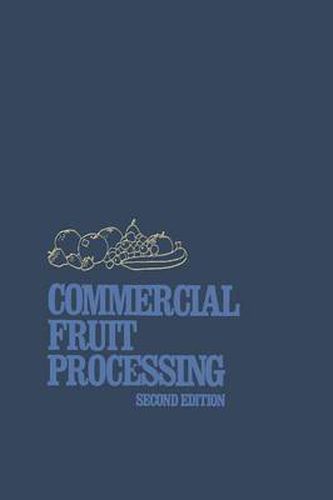Readings Newsletter
Become a Readings Member to make your shopping experience even easier.
Sign in or sign up for free!
You’re not far away from qualifying for FREE standard shipping within Australia
You’ve qualified for FREE standard shipping within Australia
The cart is loading…






This title is printed to order. This book may have been self-published. If so, we cannot guarantee the quality of the content. In the main most books will have gone through the editing process however some may not. We therefore suggest that you be aware of this before ordering this book. If in doubt check either the author or publisher’s details as we are unable to accept any returns unless they are faulty. Please contact us if you have any questions.
* use of fewer additives containing sodium, spices, artificial colors and flavors, and energy * continued use of fruits in cereals, salads, cakes, pies, and other com binations, as a source of minerals, vitamins, fiber, and natural flavors and colors An important recent innovation is low-moisture processing, in which fruit, with no added sugar, preservative, or carrier, is converted into convenient dehydrated forms. Development of this technology has been stimulated by high transportation rates, improvements in technology, and revolutionary new packages. In addition to raisins, prunes, and dehy drated apples, pears, peaches, and apricots, bananas are available in flakes, slices, and granules; pineapple and other tropical fruits also are available in new forms. Another low-moisture product is apple fiber sol ids, consisting of cell wall material (cellulose, hemicellulose, lignin, and pectin) and apple sugars. Low-moisture forms of other fruits are becom mg more common. Commercial Fruit Processing is a companion volume to Commercial Vegetable Processing, also edited by B. S. Luh and J. G. Woodroof; both are being updated and revised simultaneously. Grateful acknowledgments and thanks go to contributors who wrote in their own area of expertise on commercial fruit processing. Credit also goes to more than a dozen commercial companies and individuals who supplied photographs, charts, tables, and data from commercial opera tions. Thanks also to Ann Autry who typed, corrected, and edited the manu script; and to Naomi C. Woodroof, my wife, for assisting in research.
$9.00 standard shipping within Australia
FREE standard shipping within Australia for orders over $100.00
Express & International shipping calculated at checkout
This title is printed to order. This book may have been self-published. If so, we cannot guarantee the quality of the content. In the main most books will have gone through the editing process however some may not. We therefore suggest that you be aware of this before ordering this book. If in doubt check either the author or publisher’s details as we are unable to accept any returns unless they are faulty. Please contact us if you have any questions.
* use of fewer additives containing sodium, spices, artificial colors and flavors, and energy * continued use of fruits in cereals, salads, cakes, pies, and other com binations, as a source of minerals, vitamins, fiber, and natural flavors and colors An important recent innovation is low-moisture processing, in which fruit, with no added sugar, preservative, or carrier, is converted into convenient dehydrated forms. Development of this technology has been stimulated by high transportation rates, improvements in technology, and revolutionary new packages. In addition to raisins, prunes, and dehy drated apples, pears, peaches, and apricots, bananas are available in flakes, slices, and granules; pineapple and other tropical fruits also are available in new forms. Another low-moisture product is apple fiber sol ids, consisting of cell wall material (cellulose, hemicellulose, lignin, and pectin) and apple sugars. Low-moisture forms of other fruits are becom mg more common. Commercial Fruit Processing is a companion volume to Commercial Vegetable Processing, also edited by B. S. Luh and J. G. Woodroof; both are being updated and revised simultaneously. Grateful acknowledgments and thanks go to contributors who wrote in their own area of expertise on commercial fruit processing. Credit also goes to more than a dozen commercial companies and individuals who supplied photographs, charts, tables, and data from commercial opera tions. Thanks also to Ann Autry who typed, corrected, and edited the manu script; and to Naomi C. Woodroof, my wife, for assisting in research.